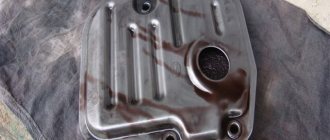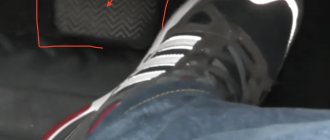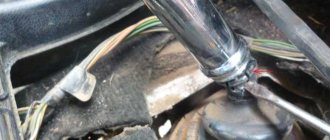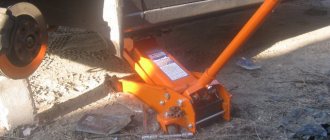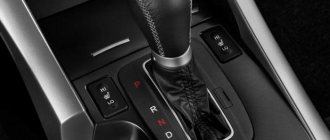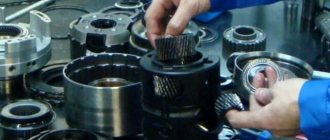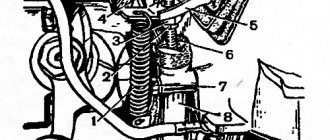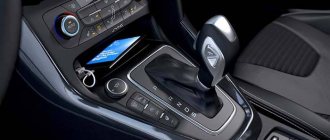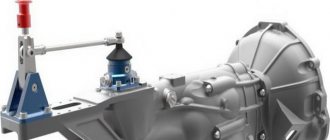Extraneous noises during vehicle use indicate breakdowns that can subsequently cause significant damage.
One of the most common noises is the crunching of the box. To properly diagnose and fix the problem, you need to carefully listen to the nature of the crunching sounds and their source.
Crunch when shifting gears | reasons what to do
Only then does driving your own car bring true pleasure when it drives comfortably, the units are in good condition and no extraneous noise disturbs the sound of your favorite melody coming from the radio. However, unfortunately, sometimes there come moments when the failure of some unit destroys this idyll, and a visit to a service station becomes inevitable.
A car with a manual transmission has several advantages: for example, you can change gears yourself, so control of the car will be completely subordinate to your will, such cars are more dynamic and at the same time more economical compared to automatic transmissions. Nevertheless, cars of this modification have their own “sores”. Today we will talk about such a common manual transmission defect as a crunching sound when shifting gears. Let's try to understand what can cause it and how to make sure that encounters with this kind of trouble are kept to a minimum.
Failures that cause crunching when changing gears
Crunching noise when shifting gears can be caused by several factors. The first and, admittedly, most popular is considered to be the breakdown of any unit, and the crunch in this case is only a symptom. Among the main breakdowns that cause such unpleasant sounds when changing gears are:
1. Failure of synchronizers. Synchronizers are responsible for smooth gear shifting. Over time, they wear out and cause a crunching sound when changing gears. Fixing the problem is quite easy - you need to replace these same synchronizers. However, only professionals should be trusted to carry out this type of repair. 2. The falling out of the clutch basket can also cause a crunching sound when changing gears. Replacing the clutch basket will eliminate this defect. 3. Clutch malfunction. Well, here words are superfluous - go for diagnostics, they will establish an accurate diagnosis. 4. Problems related to the gearbox shaft. The problem can be solved by replacing this unit.
We determine which CV joint crunches, the inner or outer one
Several methods are used to diagnose CV joints. The simplest of them is a visual inspection of the anthers and checking the shafts.
The main cause of problems associated with the appearance of crunching is the ingress of dirt into the nodes, which can only occur due to damage to the boot.
If the rubber element is torn, then upon inspection there will be traces of leaking lubricant on it, from which you can understand which of the units got sand and dust.
Also, during inspection, you should try to move the drive shaft in the transverse and longitudinal directions by hand. CV joints are highly precision-manufactured units, and if it feels like they have play, it’s time to take action.
If, during a visual inspection, no leaks in the boot are detected, but symptoms of a joint malfunction appear, several simple methods can be used to identify which of the CV joints is problematic.
Diagnostics of external hinges
External hinges are tested by placing a strong load on them. To do this, simply turn the wheels all the way to the right or left and try to start moving at higher speeds. Afterwards, we carry out the same procedure again, but this time when turning the wheels in the other direction.
When checking CV joints using this method, starting to move with the wheels turning to the left will create a significant load on the right unit, and if it has play, it will begin to crunch.
By turning the wheels to the right, the left hinge is checked. But we note that a crunching noise can also be produced by the outer CV joint on the side where the turn is being made.
Therefore, when checking, it would not be superfluous to have an assistant present, who, being near the car, will establish by ear which side the sound is coming from.
Checking internal components
To determine which inner CV joint is crunching, a different method is used. To carry it out, you need a flat section of the road, but with a bump (hole).
The essence of the test comes down to driving through a hole at a moderate speed with one of the front wheels. Then everything is repeated, but with the second wheel entering the hole.
When a wheel hits a bump, a shock load occurs on the inner joint, and if there is play in it, they will manifest themselves in the form of knocks or soft crunches.
Universal method
The only drawback of the method of driving into a hole at speed is the fact that there is not always a suitable section of road with a bump. Therefore, another method can be used for diagnostics, and it is universal and allows you to check both internal and external CV joints.
The algorithm of actions is as follows:
- Use a jack to jack up one of the drive wheels;
- We place a stop under the car and apply the handbrake;
- We start the engine, engage first gear and gradually release the clutch pedal (we simulate the beginning of movement. At the same time, thanks to the differential, the suspended wheel will begin to rotate, and the one standing on the ground will remain motionless);
- Having gained engine speed, we begin to slow down the rotating wheel with the brakes (we do not touch the clutch pedal. Thus, with the brake mechanisms we create a load on the internal unit, and if it is problematic, it will immediately manifest itself with knocks and crunches);
- After checking the internal hinge, we determine the condition of the external one. To do this, just release the brake pedal, pick up speed, turn the wheels all the way to one side and use the brakes again. A large drive angle and brake force will create the necessary load, which will cause the external assembly to crunch if it is not working properly.
After checking on one side, we repeat similar work with the drive of the second wheel.
Gearbox crunches: signs
While driving or braking the car when shifting the gearbox, the driver may hear extraneous sounds, such as crunching, grinding or crackling.
Moreover, most often, extraneous sounds when turning on the gear lever may appear only in one of the gears, for example, only when switching to first or only when switching to second, etc. Also, when returning the gear lever to the neutral position, an unpleasant cracking or grinding.
- Crunching noise when shifting into second gear. Shifting into first gear is smooth and quiet, but there is a rattling sound when shifting from first to second gear. This happens when the car accelerates, when the engine speed increases. Moreover, all other gears shift without a crunch at any speed.
- Switching from third to second gear may also be accompanied by a crunching sound, and shifting gears can be difficult. One way or another, the problem may be a failed transmission synchronizer, since the element is subject to heavy loads.
It is important to understand that if shifting the gearbox lever to higher or lower speed is accompanied by an incomprehensible crackling or grinding noise, the cause should be determined and eliminated as soon as possible
Grinding and vibrations
From the point of view of physics, the gearbox in a car is a step-by-step lever system that transfers energy from the engine to the wheels. Today, there are a number of types of gearboxes - mechanical, hydromechanical (automatic), robotic, CVT. Each type of transmission works differently, however, there are common signs of transmission failure.
“You should be concerned and take decisive action as soon as possible if you hear strange noises when changing gear or notice oil leaking from the gearbox. The machine may also experience increased vibrations. A normally functioning transmission does not show any of these signs,” says Vyacheslav Kondratyev, head of the holding company for the exclusive representative of motor oils in Russia.
To find out the cause of the malfunction, experts advise first checking the level and color of the oil in the transmission. Low level and dirty oil in the box can damage it.
Experts say that for proper operation of the transmission, it is necessary to add oil strictly according to the level. If it is not enough, then overheating is likely - the worst enemy of the gearbox.
Unsuitable oil
The transmission can be damaged if the wrong oil is used.
“The requirements for a modern gearbox oil are: good fluidity over the operating temperature range, reliable wear protection, excellent synchronization, high oxidation and shear stability, low tendency to foam, good seal compatibility, high efficiency,” says Vyacheslav Mikhailovich.
Different types of gearboxes require special gear oils recommended by the manufacturer. If the oil is selected incorrectly, slippage and vibration begin, fuel consumption increases, wear increases, and the oil can burn.
How to correctly change gears on a manual transmission while driving?
In fact, the actions are simple; while driving, everything is worked out until it becomes automatic:
- First of all, you should remove your foot from the accelerator pedal and, at the same time, depress the clutch pedal all the way.
- Next, you need to shift to a lower or higher gear, depending on what you want to accomplish.
- After this, you need to very slowly and smoothly release the clutch pedal, while adding gas.
Over time, you will learn to feel that very moment of the clutch in your car, the moment when the pedal needs to be completely released and done so smoothly, without causing harm to the mechanisms. A gearbox is a complex mechanism, most drivers have never seen one.
If used incorrectly, the mechanisms will wear out prematurely, causing damage to the car and your wallet if it breaks down, take care of your transport. Knowing how to correctly change gears on a manual transmission while driving will protect your vehicle from unnecessary repair work. Try to do all the steps correctly, and your car will last longer.
New articles
- How to drive a car? For beginners, we will go through the points you need to know step by step.
- How can a woman learn to drive a manual car from scratch?
Table of faults and their elimination
| Manual transmission malfunction | Cause and remedy |
| One or all gears do not engage | Wear, broken synchronizers (broken teeth), broken clutch basket petals, a problem with the fork or release bearing, a broken shaft or gears, faulty linkages to the manual transmission (they may need to be adjusted with the replacement of plastic bushings), low oil level, or the wrong transmission fluid has been filled ( maybe water got in) |
| Noise in neutral when the engine is running | Wear of the bearing (drive gear or drive shaft), low level of lubrication, dirty (worn out oil), ingress of dirt or water, it happens that there is a malfunction in the shaft itself (for example, it is overheated initially) |
| Noise when gears are engaged (in all gears) – the engine is running | The same reasons as in neutral, the bearing of the output shaft or driven gear has collapsed, the clutch and engine housings are not aligned |
| Noise in one gear engaged, engine running | The synchronizer is broken, the teeth of this gear are worn out |
| Crunch when switching | Clutch malfunction (basket, disc), drive does not work (cable breaks, fluid leaks), synchronizer wear, gear malfunction, sometimes the box unscrews itself (you need to check the fastening) |
| Gears disengage on their own (either when accelerating or when resetting) | Problem with synchronizers, broken gears, damaged gear forks, destruction of shaft bearings, manual transmission unscrewed, damaged gear shift rods |
| Vibration from manual transmission when engine is running | The power unit itself operates unevenly, the manual transmission has come loose, the fastenings to the body are broken, the supports are destroyed |
| Oil leak from manual transmission | The oil drain plug is leaking, oil seals and O-rings are leaking, there is too much oil inside, the manual transmission housing is broken (cracks have appeared as a result of impacts) |
This is not all, but the most common reasons, of course, to eliminate them you need qualified help; you are unlikely to do anything yourself, if only because removing a manual transmission, especially on a front-wheel drive one, is not so easy. The thing is that the main faults lie inside and in order to identify them, in any case you need to remove your gearbox.
Extending the service life of gearboxes
Transmission shaft assemblies
There are only two recommendations.
- Always try to monitor the oil level in the gearbox. If it drops, be sure to top it up immediately, do not delay the procedure until later. When the oil becomes unusable, change it completely, rather than fill in the missing amount.
- Avoid aggressive use, do not jerk the gears sharply, accelerate smoothly, and brake similarly. A simple caring attitude towards the gearbox will allow you to avoid wear and tear and numerous breakdowns.
As you can see, solving problems with checkpoints is not so easy. Therefore, the best option is to prevent their occurrence.
In this article we will look at the main reasons for reverse gear not engaging:
The first thing you need to pay attention to is the rocker itself and the cardan - it often happens that the rocker is slipping, the splines are ground off or the clamp is loose. In this case, you will need an overpass or a pit. Reverse gear locking mechanism
To check this mechanism, you need to remove the gearshift knob (the dashboard between the seats) and look. Everything will become clear in place. If you checked the first two points and no problems were found, then you will have to remove the gearbox (How to remove the gearbox?). The fixing bolt was cut off. Fastening the gear selection mechanism. A spring (the most ordinary one, sometimes it bursts).
Alternatively, the reason could be the release bearing, but then all the gears would engage barely and with a crunch. You can also try adjusting the clutch pedal.
What to do if there is a hum or crackling sound coming from the box?
The gearbox is the main mechanism of the vehicle. Any problems that arise with it must be corrected in a timely manner. If the gearbox is humming, then you should trust the diagnosis and repair of this unit to trusted services.
There are a number of reasons that cause noise:
- wear of the shaft, gears, bearings, synchronizers has occurred;
- if the gearbox howls at only one speed, it is worth checking the integrity of the teeth;
- insufficient amount of transmission oil;
- The box is noisy even if the oil has thickened;
- used oil (the liquid contains metal particles or water);
- There are problems with the “fork” box, which can cause the transmission to “knock out.”
If the release bearing wears out, gearbox noise may be heard when the pedal is released. Also, there is an inaccuracy in switching on speed modes. In this case, it is worth sending the car for diagnostics. If problems are detected, the gearbox must be removed from its original location, after which it needs to be rebuilt to replace worn components.
A hum in the gearbox (mechanical) is one of the most common signs of problems with the gearbox. If there is insufficient lubrication, the manual transmission howls in higher gears (5th, 6th). In some cases, the hum is a technological feature of the gearbox or spare parts were installed that are not suitable for the gearbox.
If you notice a rattling sound in the gearbox when changing gears, this is a cause for concern. Mechanical faults can result in a crunching sound in the gearbox. In rare cases, the problem is due to a manufacturing defect.
AvtoVAZ reaction
It is worth noting that not all sedans are susceptible to this problem, but only the first batch cars.
In September 2021, the issue was resolved - all Vestas began to be equipped with new manual transmission cables. So the Russian automobile concern acted quite quickly.
As for the instructions, if such a defect exists, AvtoVAZ recommends contacting the dealership and having the cables replaced.
However, not all owners are ready to do this. The fact is that such a procedure is quite lengthy, since to replace it it is necessary to dismantle the entire dashboard, then remove the steering column, including the electric power steering, and also the heater. Also, such a replacement involves draining antifreeze and freon.
Naturally, this is quite a long time and not every Vesta owner is ready to give the sedan for service for such a long period of time.
If such a situation arises, but you want to do without replacing the cables, and the car is under warranty, it is strongly recommended that you make an appointment for diagnostics at a dealership
And in order to narrow down the search and help those who decide to fix the defect themselves, we will give recommendations on where to look first.
Before you begin work on eliminating crackling and clicking noises in the manual transmission of the Lada Vesta, you will need to remove the central tunnel. It consists of 2 sections - front and rear, with the rear being noticeably smaller.
To remove the rear section, you need to arm yourself with a ratchet with a Torx 20 bit (asterisk), use it to unscrew the 2 mounting screws, and then remove the plug. The trim itself is carefully pulled out - to do this you will need to remove the handbrake from it.
As for the front part, the tunnel is covered with plastic shields on both sides. They are secured with screws (1 per side), which need to be unscrewed and the plastic removed.
The screws need to be unscrewed
Then, carefully prying up the frame with a knife or screwdriver, the cover of the manual transmission lever is removed, after which the plug is disconnected and the lining is removed. In the end, all that remains is to unscrew the 4 mounting screws and remove the remaining cladding
In the end, all that remains is to unscrew the 4 mounting screws and remove the remaining cladding.
Everything is clearly shown in the plot.
Why does the gearbox crunch?
As you know, a manual transmission is highly reliable and unpretentious. With proper use and timely maintenance, the “mechanics” do not often fool the driver. However, over time, this transmission may also develop malfunctions. One of the most common problems is a squeaking sound when shifting gears. What causes it and how to fix the problem will be discussed in this article.
Most often, an unpleasant crunching or grinding noise appears when switching to only one gear (for example, to second) and when switching the lever to the neutral position
If you hear a crackling, grinding or crunching sound when upshifting or downshifting, it is important to find the cause of the problem and fix it as soon as possible
Troubleshooting
Problems associated with the operation of the gearbox during wear can be slowed down if you properly care for these units. Frequent oil changes in the gearbox. Do not forget that oil reacts not only to individual units, but also to shafts, gears and other gearbox modules. Thus, the oil itself must be of good quality, because it is the oil that affects all components of the gearbox.
Many car owners are advised to change gearbox oil every 60,000 kilometers. If you want to use your equipment correctly, then you can change the oil more often than once every 60,000 kilometers, because 60,000 kilometers is the distance over which you must do this, and you, in turn, can do it a little more often. Poor switching and possible causes.
If they do not work or work with difficulty when the gearbox is operating, then you should study the article why gears on a manual transmission are difficult to engage. It is also worth mentioning that a lack of oil in a manual transmission can also cause problems with the operation of the gearbox and in this case the oil is usually topped up or completely changed.
The appearance of a crunch due to improper operation of the transmission
It is important to note that often a crunching sound during gear shifting indicates improper operation of the transmission. Therefore, in order for the manual transmission to last for a long time, you should follow some recommendations.
It is necessary to promptly change the transmission oil. Not everyone knows that this fluid must be changed periodically in both automatic and manual transmissions. Of course, a manual transmission does not need to change the oil too often, but after the mileage crosses the threshold of 70,000 km, you should definitely visit a service station.
If this fact is left unattended, metal shavings and dirt will accumulate in the liquid, resulting in insufficient lubrication and the occurrence of a crunching sound. The same sound can also appear due to the fact that there is not enough oil in the transmission. Adding oil or replacing it will help solve the problem.
Possible causes of malfunction
Very often, problems with uninterrupted gear shifting when the engine is turned off arise due to breakdowns of the synchronizers in the gearbox. The cause of the malfunction may also be gear wear or breakage. There may also be malfunctions of the mechanisms and components responsible for transmitting force from the lever to the gearbox when the driver turns on the speed.
In order to accurately determine the problem, you need to either remove the box to disassemble it and identify the fault, or find and replace failed components. Although often the usual prevention is enough: adjustments and lubrication.
What's the result?
When purchasing a new or used car with an automatic or robotic transmission, you need to gather as much useful information as possible about the specific model. Let us also add that in the case of a used car, prices may vary depending on the year of manufacture, the general technical condition of the car, etc.
It should also be noted that models with traditional automatic transmission are often more expensive than versions with manual transmission. The fact is that a classic torque converter “automatic” is more reliable and comfortable than a robotic transmission, which in the vast majority of cases today is installed on budget cars in order to reduce the cost.
What is an AMT gearbox: features and differences between gearboxes... AMT gearbox: design and operation of a robotic gearbox, types of robotic gearboxes. Advantages and disadvantages of robotic transmission. Read more
Automatic hydromechanical gearbox... Automatic gearbox (automatic transmission, automatic transmission) of the “classic” type with a torque converter: device and principle of operation. Pros and cons of hydromechanical automatic transmission. Read more
Robotic transmission (manual transmission) and principle... The design and principle of operation of a robotic transmission. Differences between robotic gearboxes and torque converter automatic transmissions and CVT variators. Read more
Automatic transmission: automatic transmission device... How an automatic transmission works: classic hydromechanical automatic transmission, components, controls, mechanical part. Pros and cons of this type of gearbox. Read more
Gearbox (gearbox): purpose and types of gearboxes... What is a gearbox in a car: purpose of a gearbox, types of gearboxes, principle of operation, distinctive features of transmissions. Read more
How to connect an engine to a gearbox... Connecting a gearbox and a car engine
Connecting a manual and automatic transmission with an internal combustion engine: what to look for, features and nuances. Read more
AvtoVAZ reaction
It is worth noting that not all sedans are susceptible to this problem, but only the first batch cars.
In September 2021, the issue was resolved - all Vestas began to be equipped with new manual transmission cables. So the Russian automobile concern acted quite quickly.
As for the instructions, if such a defect exists, AvtoVAZ recommends contacting the dealership and having the cables replaced.
However, not all owners are ready to do this. The fact is that such a procedure is quite lengthy, since to replace it it is necessary to dismantle the entire dashboard, then remove the steering column, including the electric power steering, and also the heater. Also, such a replacement involves draining antifreeze and freon.
Naturally, this is quite a long time and not every Vesta owner is ready to give the sedan for service for such a long period of time.
If such a situation arises, but you want to do without replacing the cables, and the car is under warranty, it is strongly recommended that you make an appointment for diagnostics at a dealership
And in order to narrow down the search and help those who decide to fix the defect themselves, we will give recommendations on where to look first.

